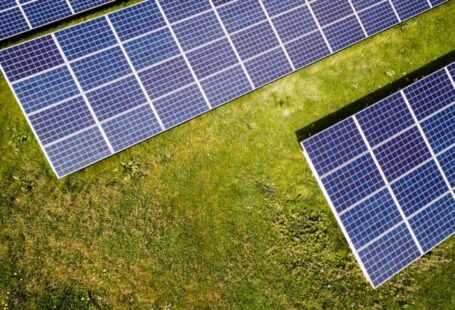Solar power has emerged as a promising renewable energy source in Indonesia, a country blessed with abundant sunlight throughout the year. The adoption of solar power in Indonesia has been steadily increasing in recent years, driven by a combination of environmental concerns, government incentives, and technological advancements. In this comprehensive guide, we will delve into the economics of solar power in Indonesia, exploring its potential, challenges, and opportunities for both investors and consumers.
**The Current State of Solar Power in Indonesia**
Indonesia, with its vast archipelago, is heavily dependent on fossil fuels for electricity generation, making it one of the largest carbon emitters in the world. The government has recognized the need to transition towards cleaner energy sources and has set ambitious targets to increase the share of renewable energy in the country’s energy mix. Solar power, in particular, has been identified as a key player in achieving these targets due to its abundance and sustainability.
**Government Incentives and Policies**
To spur the growth of solar power in Indonesia, the government has implemented various incentives and policies to attract investments and facilitate the development of solar projects. One of the key initiatives is the feed-in tariff scheme, which guarantees a fixed price for solar power generated and injected into the grid. This scheme provides certainty for investors and helps to make solar projects financially viable.
In addition to the feed-in tariff scheme, the government offers tax incentives, grants, and subsidies to support the development of solar power projects. These incentives aim to reduce the upfront costs of installing solar panels and make solar power more competitive with traditional fossil fuel-based electricity generation.
**Cost-Competitiveness of Solar Power**
The costs of solar power have been steadily declining worldwide, making it increasingly cost-competitive with conventional energy sources. In Indonesia, the levelized cost of electricity (LCOE) for solar power has become more competitive in recent years, thanks to falling equipment prices, technological advancements, and economies of scale.
Despite the initial capital investment required to set up a solar power system, the long-term cost savings are significant. Solar power systems have low operating and maintenance costs compared to fossil fuel-based power plants, making them a cost-effective option in the long run. Moreover, solar power systems have a long lifespan, typically around 25 years, ensuring a steady and reliable source of electricity over their lifetime.
**Financing Options for Solar Power Projects**
Financing is a crucial aspect of solar power projects, as the upfront costs can be a barrier for many investors and consumers. In Indonesia, various financing options are available to support the development of solar projects, including loans, grants, leasing arrangements, and power purchase agreements (PPAs).
Banks and financial institutions in Indonesia are increasingly offering green financing products tailored for renewable energy projects, including solar power. These financing options aim to make solar projects more accessible and affordable for a wider range of investors, from large corporations to individual homeowners.
**Opportunities for Investors and Consumers**
The growing demand for clean energy in Indonesia presents lucrative opportunities for investors looking to enter the solar power market. The government’s commitment to increasing the share of renewable energy in the energy mix, coupled with supportive policies and incentives, creates a favorable environment for solar power investments.
For consumers, installing a solar power system offers energy independence, cost savings, and environmental benefits. By generating their own electricity from the sun, consumers can reduce their reliance on the grid, lower their electricity bills, and reduce their carbon footprint. With the right financing options and incentives, more consumers in Indonesia can harness the power of the sun and contribute to a sustainable energy future.
**In Summary**
The economics of solar power in Indonesia present a promising landscape for investors and consumers alike. With supportive government policies, declining costs, and a growing demand for clean energy, solar power is poised to play a significant role in Indonesia’s energy transition. By leveraging the available incentives, financing options, and technological advancements, Indonesia can harness the power of the sun and pave the way towards a more sustainable and resilient energy future.





